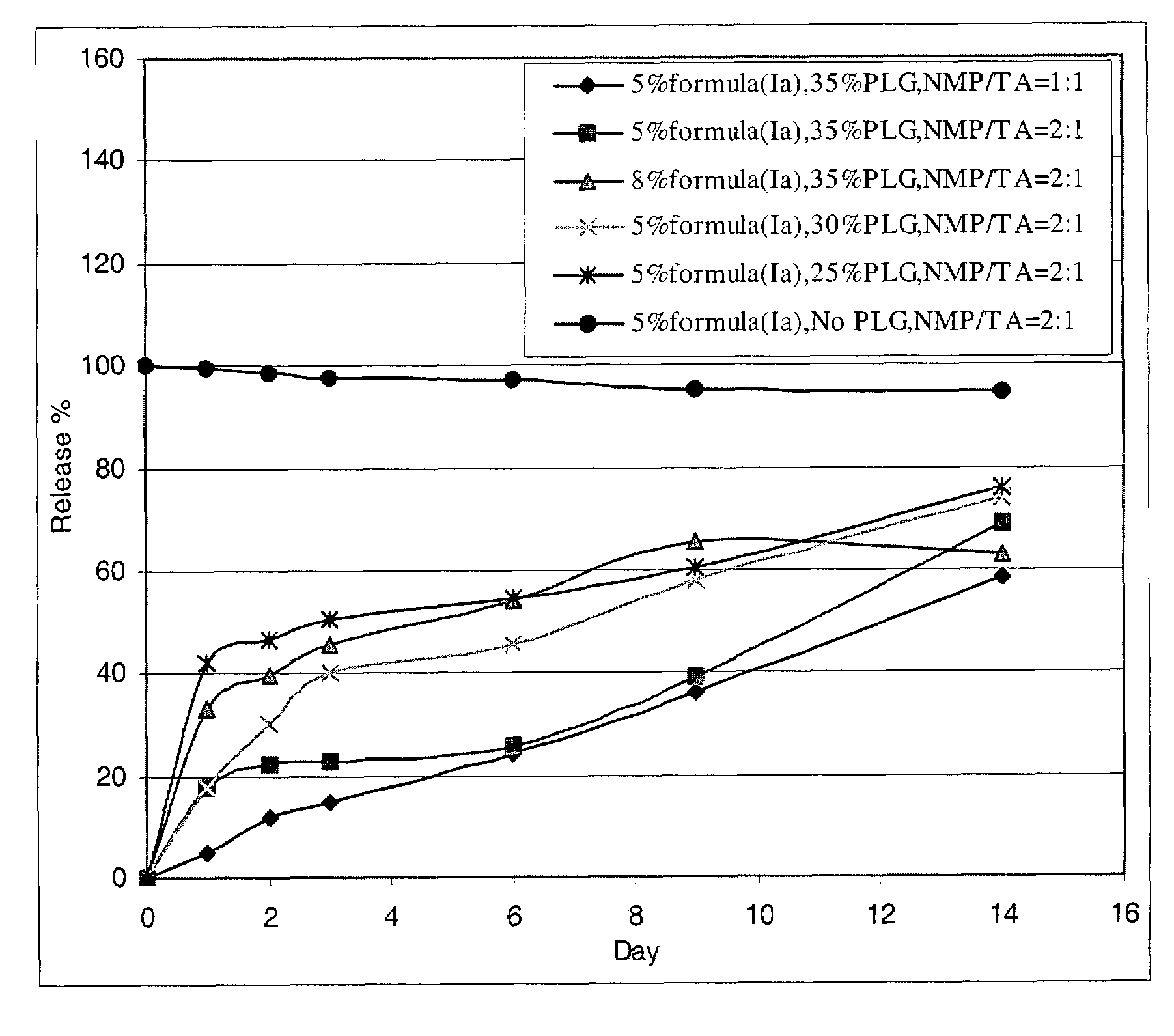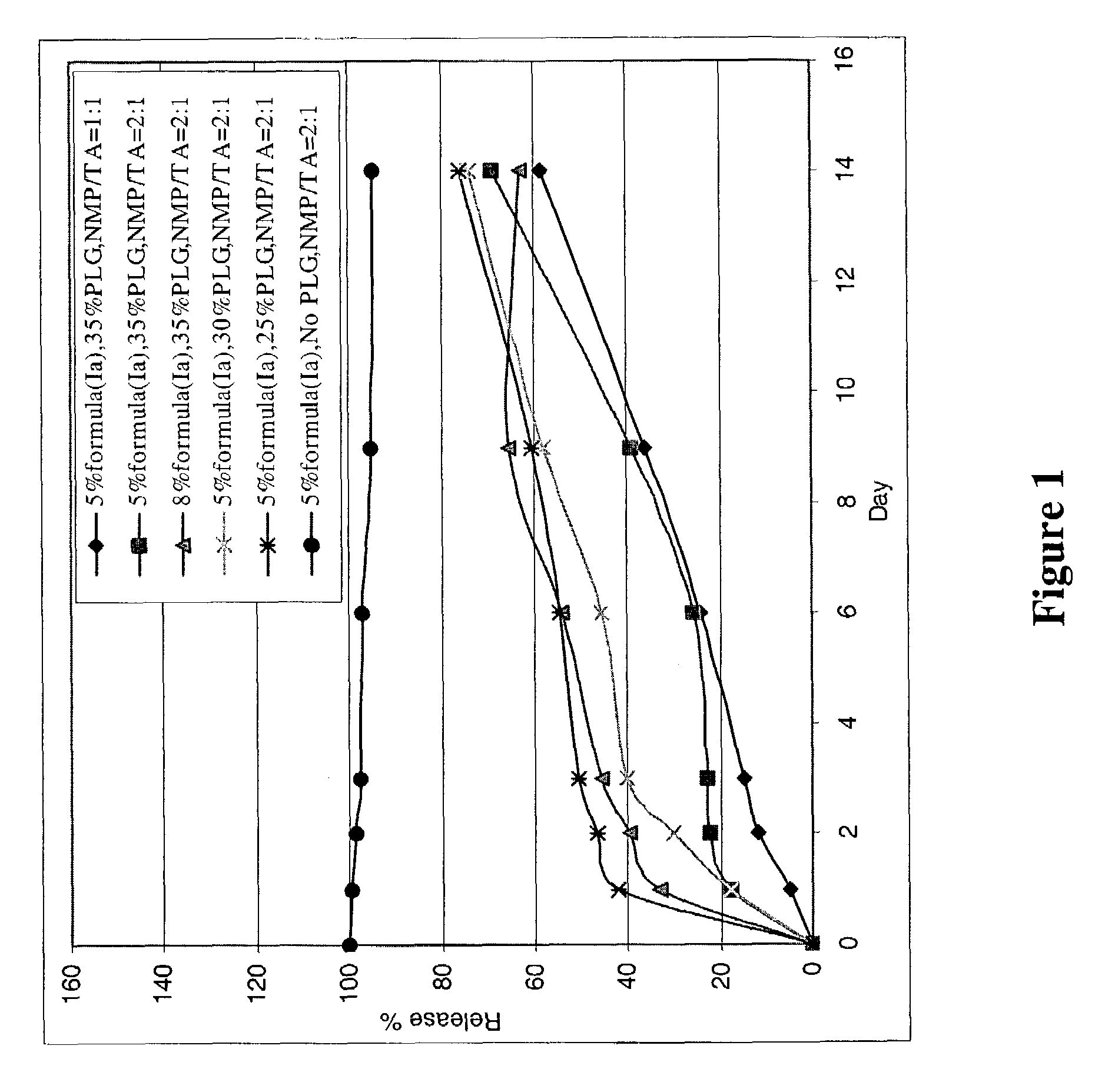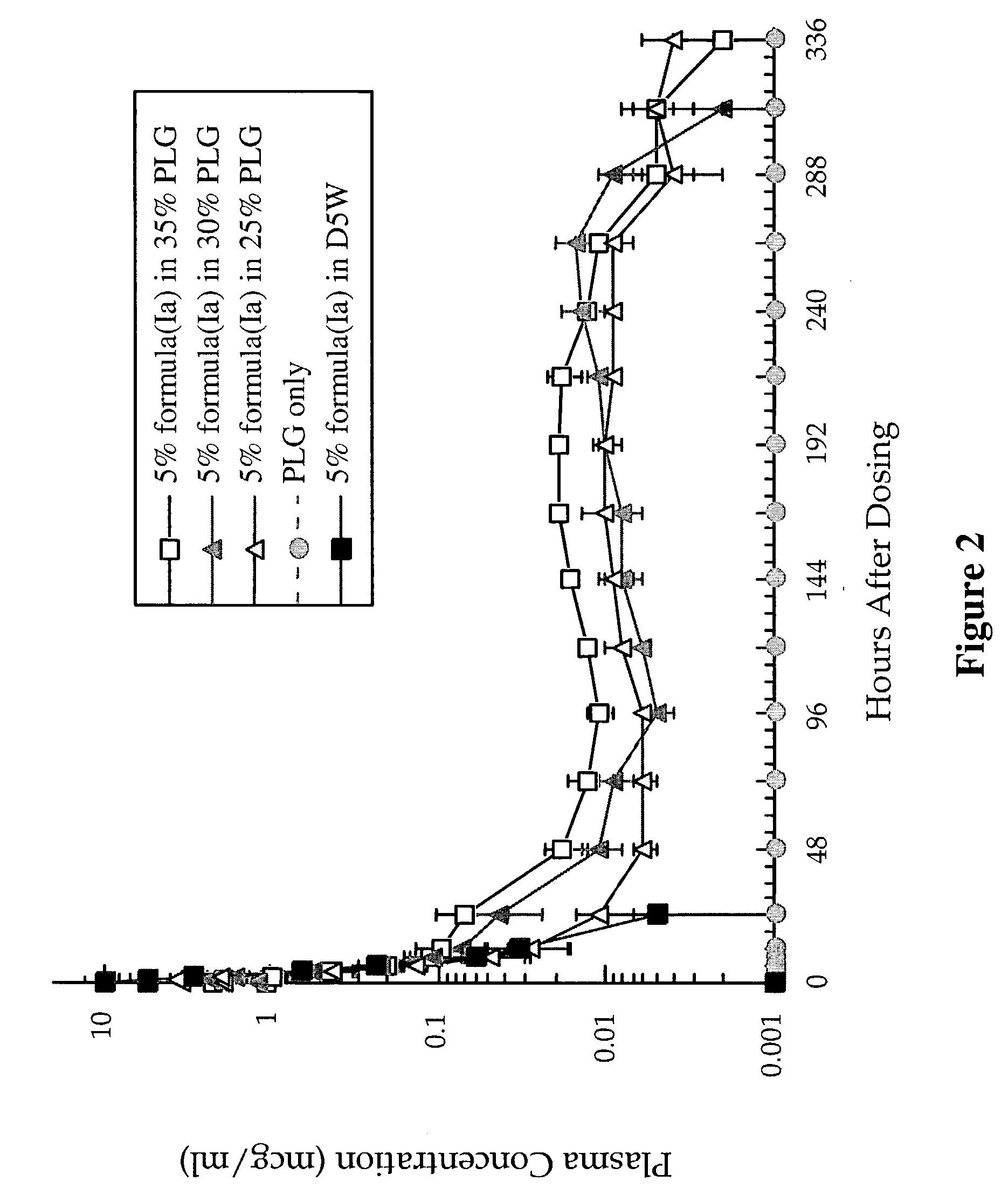Pharmaceutical formulation comprising a peptide angiogenesis inhibitor
a technology of angiogenesis inhibitor and pharmaceutical formulation, which is applied in the direction of angiogenin, drug composition, metabolism disorder, etc., can solve the problem that the sustained release properties of the prior art formulation cannot be predictably applied to these antiangiogenic compounds
- Summary
- Abstract
- Description
- Claims
- Application Information
AI Technical Summary
Benefits of technology
Problems solved by technology
Method used
Image
Examples
example 1
General Procedure for Preparation of Peptide Salts
(a) Preparation of Ion Exchange Resin
[0152]A BioRad AG 1-X2 anion exchange resin acetate form (150 g, catalog #140-1253, 0.6 meq / mL resin bed, 0.65 g / mL) was washed with 500 mL of dilute acetic acid (20 mL glacial acetic acid diluted to 500 mL in water) in a fritted glass suction filter. The resin was then washed with 1 L of HPLC grade water.
[0153]The desired organic acid (pivalic acid, valproic acid, or octanoic acid, 0.6 mol) was mixed with 2 L of HPLC grade water and treated with 0.9 equivalents of NaOH (22 g dissolved in 200 mL water) with stirring until the pH was neutral / slightly basic.
[0154]The above prepared resin was washed over a period of 45 minutes with the above prepared sodium salt of the desired organic acid. The resin was isolated by suction filtration and washed with 2 L of HPLC grade water. The resin was tested for conversion to the desired salt by stirring 2 g of resin with 2 mL of a 50 mM NaOH solution for 5 minut...
example 2
Preparation of the Formulations of Compound of Formula (Ia) in PLG (13 KD) Gels
(a) Formulation of 5% Acetate Salt of Formula (Ia) in 35% PLG Gel and NMP / TA (2:1) (Formulation I)
[0157]A mixture of NMP and TA (2:1, w / w) was prepared using of 14.993 grams of TA and 30.022 grams of NMP. A portion of this solvent mixture (19.505 g) was stirred at room temperature with 10.515 g of PLG (13 KD, 50:50 polymer ratio). The resulting PLG (35%) solution was transparent and viscous. A portion of the PLG solution (12.026 g) was treated with the acetate salt of formula (Ia) (prepared as described in Example 1c). The mixture was stirred at room temperature until a clear gel formed. The resulting PLG formulation (formulation I) consisted of 4.98% acetate salt of formula (Ia), 33.28% PLG, 41.18% NMP and 20.56% TA (w / w), and could be stored under refrigeration.
(b) Formulation of 5% Acetate Salt of Formula (Ia) in 30% PLG Gel and NMP / TA (2:1) (Formulation II)
[0158]A 30% PLG solution in NMP / TA (2:1, w / w)...
example 3
Potency Determination
[0162]A sample of the acetate salt of formula (Ia) in PLG gel (prepared as described in Example 2) was dissolved in aqueous acetonitrile and further diluted with water. The precipitated polymer was subsequently removed by filtration through a membrane filter. The concentration of the compound of formula (Ia) in the filtrate was determined by HPLC. The acetate salt of formula (Ia) could be completely recovered from the PLG gel. There was no extensive degradation found by HPLC for any of the salts described in Example 2.
PUM
| Property | Measurement | Unit |
|---|---|---|
| Fraction | aaaaa | aaaaa |
| Fraction | aaaaa | aaaaa |
| Fraction | aaaaa | aaaaa |
Abstract
Description
Claims
Application Information
 Login to View More
Login to View More - R&D
- Intellectual Property
- Life Sciences
- Materials
- Tech Scout
- Unparalleled Data Quality
- Higher Quality Content
- 60% Fewer Hallucinations
Browse by: Latest US Patents, China's latest patents, Technical Efficacy Thesaurus, Application Domain, Technology Topic, Popular Technical Reports.
© 2025 PatSnap. All rights reserved.Legal|Privacy policy|Modern Slavery Act Transparency Statement|Sitemap|About US| Contact US: help@patsnap.com



